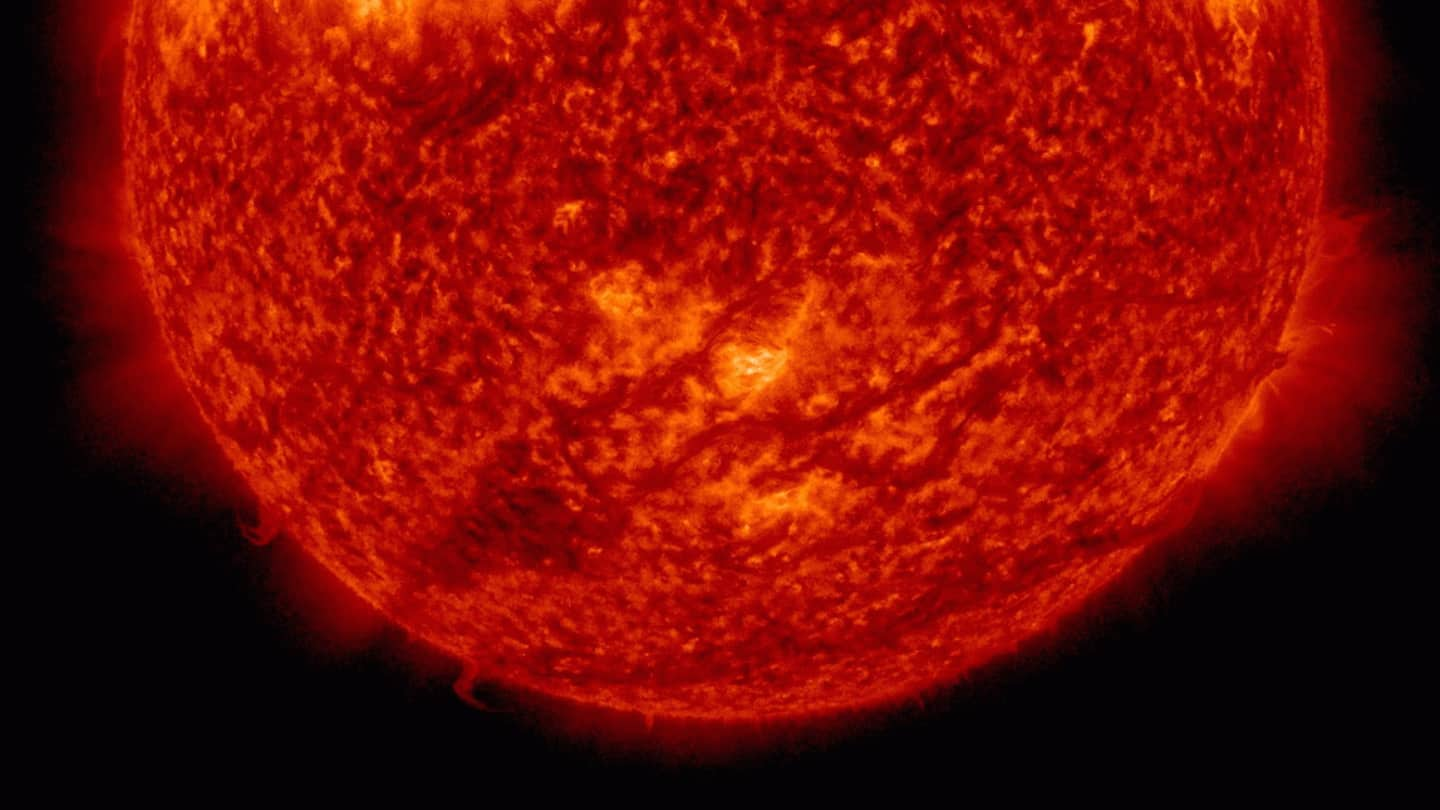
200,000-kilometer-long magnetic solar filament might hurl severe flares toward Earth
What's the story
Lately, the Sun appears to be excessively active. Warnings of X-class solar flares were rampant only a few days ago. Now, an enormous 200,000km long magnetic filament has snapped out from the southern hemisphere of the star. The remnant debris from this blast could be headed toward Earth. Observatories reveal that Coronal Mass Ejections (CME) have erupted from the same site.
Context
Why does this story matter?
Sunspots, explosions, and solar flares continue to worry us. The Sun will soon reach the peak of its current solar cycle in 2023 and such events are expected to occur frequently. The looming concern about solar flares is that they can jeopardize communication systems, navigation controls, power grids, and even pose a threat to spacecrafts.
About the explosion
Low intensity geomagnetic storms and Auroras are expected
According to spaceweather.com, a gigantic magnetic filament snapped out from the Sun on October 4. Remnant debris from the blast along with CMEs are predicted to swish past the southern part of the Earth. There are possibilities that the Earth's magnetic field might be disturbed by these ejections. Skygazers can expect minor geomagetic storms and auroras on October 8.
Sunspots
A colossal sunspot has emerged on the star
Earlier this week, solar flares blasted from the AR3110 sunspot impeded rescue missions by hampering communication facilities in the hurricane affected areas of the US. Soon after that, the appearance of the enormous AR3112 sunspot came to light. This unstable sunspot is expected to blow up. There is 65% probability of an M-class solar flare and a 30% chance of an X-class flare.
Information
More sunspots are expected to appear
As mentioned, the Sun is heading toward the pinnacle of its solar cycle. This heightens the probability of emergence of sunspots on the star. Needless to mention, dangerous explosions and flares are likely to follow.